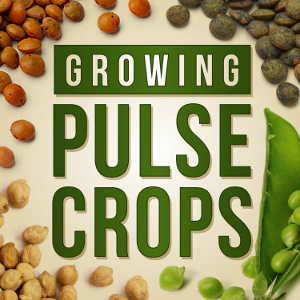Publications

Pulse crop harvest. Photo USDA
This page contains links to pulse crop related publications and media, including videos, podcasts, and web resources.
The long-term goal of this project is to provide integrated pest management (IPM) based options for prevention and management of root rot, learn more about how practices interact with plant nutrition, and increase the sustainability of the pulse crop industry.
Contents
Videos
Learn more about pulse crops in Montana on YouTube. Selecting a button will expand an embedded YouTube video. Direct links can be found in each video summary.
Fungicide Seed Treatments for Root Rot in Lentil
This video discusses establishing plots to determine the efficacy of seed treatment fungicides for management of root rot in lentil. We talk about the symptoms of root rot, how we inoculate and design plots, and what results we expect from this trial. Presented by MSU Extension. View on YouTube or with the embedded player above.
How to Prevent Root Rot in Pulses
Pulse crop production has dramatically increased within the state of Montana in the last few years, and so has root rot cases in these crops. Learn what causes root rot issues to arise and what you can do to take control of your fields. Presented by MSU Extension. View on YouTube or with the embedded player above.
Montana Pulse Growers
A variety of pulse crops are growing in popularity among Montana farmers, both as a cash crop and as a way to improve soil management practices. Presented by MSU Extension. View on YouTube or with the embedded player above.
Observations from the Road: Lentils
This week the Extension Plant Pathology Lab at Montana State did a tour of lentil production areas of Montana. We observed some agronomic and insect issues while searching for root rot. Presented by MSU Extension. View on YouTube or with the embedded player above.
Podcasts
 Growing Pulse Crops Podcast
Growing Pulse Crops Podcast

The science and business of farming field peas, chickpeas, and lentils. Join us as we follow pulse crop farmers through the growing season and dive into the research that’s helping them through some of the challenges they face. We’ll also talk to a number of other industry stakeholders along the way.
Demand for these nutrient-dense, high-protein foods continues to grow. There is also interest from farmers to include more pulses into diverse rotations for benefits like nitrogen fixation and soil health.
But the industry continues to face challenges, and we are eager to address these head on. So if you’re a pulse grower or in any way interested in these important crops, hit subscribe and stay tuned for future episodes. We’ll be back with plenty of information about challenges pulse farmers are facing throughout the U.S. and what solutions are working.
The Growing Pulse Crops Podcast is presented by the Pulse Crops Working Group with support from the North Central IPM Center and USDA NIFA. Hosted by Tim Hammerich.
 Soil Sense Podcast
Soil Sense Podcast

We believe that building healthier soils is not just a prescription, but rather a pursuit. This journey requires collaboration, curiosity, and communication among farmers, agricultural researchers, agronomists, consultants, and extension. You’re going to hear their stories and discover how and why they’re working together to make sense out of what’s happening in the soil.
Presented by North Dakota State University and hosted by Tim Hammerich.
Resources
Diseases of Cool Season Legumes (Pulse Crops: Dry Pea, Lentil and Chickpea) [PDF]
- Dr. Mary Burrows, Montana State University Extension
Diseases in Legumes: Lentils
- Crop Pro
Lentil Diseases - Identification and Management
- Saskatchewan Agriculture Knowledge Center
Pea Disease Diagnostic Series
- Samuel Markell, North Dakota State University
- Julie Pasche, North Dakota State University
- Lyndon Porter, US Department of Agriculture
Plant Pathology
- Carrington Research Extension Center, North Dakota State University
